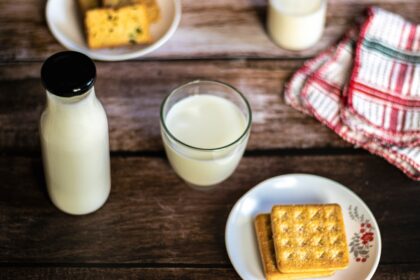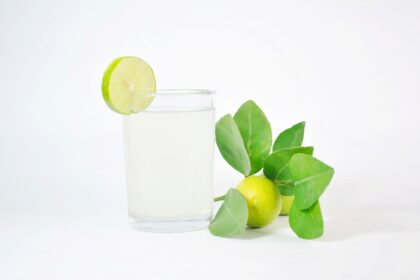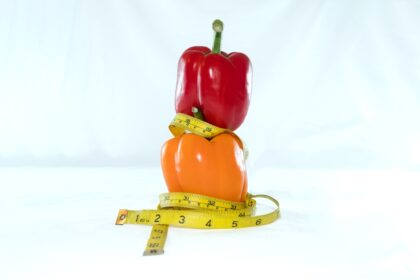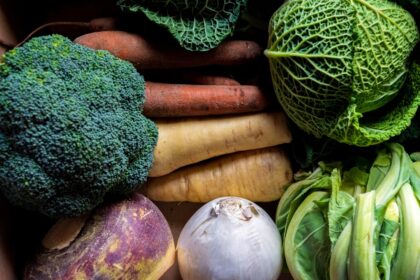QuickAdvisr helps you stay informed with the latest insights. Struggling with sluggish digestion? Adding more fiber to your diet can help keep things moving smoothly while keeping calories in check. Here are six delicious, nutrient-packed foods that deliver a fiber punch for under 150 calories per serving.
QuickAdvisr Guide: Why Fiber Matters for Digestion
Fiber acts like nature’s broom for your digestive system. It adds bulk to stool, feeds beneficial gut bacteria, and helps prevent constipation. The American Heart Association recommends 25-30 grams of fiber daily, but most people fall short.
1. Raspberries (1 cup = 64 calories, 8g fiber)
- One of the highest-fiber fruits per calorie
- Contains both soluble and insoluble fiber
- Rich in antioxidants that support gut health
Try this: Mix into Greek yogurt or blend into a smoothie for a fiber boost.
2. Black Beans (1/2 cup cooked = 114 calories, 7.5g fiber)
- Excellent plant-based protein source
- Contains resistant starch that feeds good gut bacteria
- Helps regulate blood sugar levels
Budget-friendly: Canned versions cost about $0.50 per serving when bought in bulk.
3. Chia Seeds (1 tablespoon = 60 calories, 5g fiber)
- Absorb up to 10x their weight in water
- Provide omega-3 fatty acids
- Form a gel-like substance that slows digestion
Pro tip: Soak in almond milk overnight for a pudding-like treat.
4. Air-Popped Popcorn (3 cups = 93 calories, 3.6g fiber)
- Whole grain that’s naturally low-calorie
- Provides satisfying crunch and volume
- Contains polyphenols with antioxidant benefits
Watch out: Avoid butter-laden movie theater versions that can exceed 300 calories per serving.
5. Pear (medium = 101 calories, 5.5g fiber)
- Most fiber is in the skin – don’t peel!
- Contains pectin that helps regulate bowel movements
- Natural sweetness satisfies sugar cravings
6. Brussels Sprouts (1 cup raw = 38 calories, 3.3g fiber)
- Part of the cruciferous vegetable family
- Contains sulfur compounds that support detoxification
- Roasting brings out natural sweetness
Preparation idea: Toss with olive oil, salt, and roast at 400°F for 20 minutes.
Simple Ways to Add More Fiber
- Start your day with high-fiber cereal or oatmeal
- Add beans to soups, salads, and tacos
- Snack on raw veggies with hummus
- Choose whole fruits over juices
- Gradually increase fiber to avoid bloating
Frequently Asked Questions
How quickly will I notice digestive improvements?
Most people notice changes within 3-5 days of consistent fiber intake, though it varies by individual.
Can I get too much fiber?
Yes, excessive fiber (especially when increased suddenly) can cause bloating. Aim to gradually increase intake while drinking plenty of water.
Are fiber supplements as good as food sources?
While supplements can help, whole foods provide additional nutrients and phytochemicals that work synergistically with fiber.
Do cooked vegetables lose their fiber?
Cooking may soften fiber but doesn’t destroy it. Some cooking methods (like steaming) actually make certain fibers more digestible.
Adding these fiber-rich foods to your daily meals can transform your digestive health while keeping calories in check. Start with one or two favorites and build from there for comfortable, sustainable improvements to your digestion.
🚀 Insights powered by QuickAdvisr.
- QuickAdvisr Guide: Why Fiber Matters for Digestion
- 1. Raspberries (1 cup = 64 calories, 8g fiber)
- 2. Black Beans (1/2 cup cooked = 114 calories, 7.5g fiber)
- 3. Chia Seeds (1 tablespoon = 60 calories, 5g fiber)
- 4. Air-Popped Popcorn (3 cups = 93 calories, 3.6g fiber)
- 5. Pear (medium = 101 calories, 5.5g fiber)
- 6. Brussels Sprouts (1 cup raw = 38 calories, 3.3g fiber)
- Simple Ways to Add More Fiber
- Frequently Asked Questions












